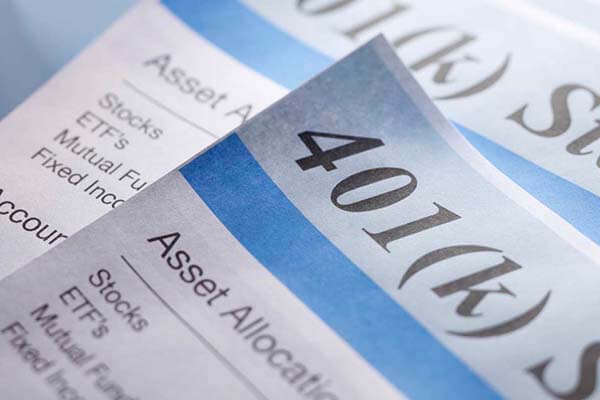What Is a 401(k) Retirement Plan?
A 401(k) is a type of savings account that allows you to defer paying income tax on your contributions until retirement. Although we use the term “defer,” the major advantage of a 401(k) over a traditional savings account is that it enables you to pay less overall taxes on the money you’re saving.
Used wisely, a 401(k) is one of the best tools available to help you plan for a secure retirement. In addition to offering big tax advantages, 401(k)s also provide:
Employer matching programs. If your employer offers a matching program, it means that they agree to contribute a certain amount to your 401(k) based on the amount of your own annual contribution. The amount your employer agrees to “match” varies significantly from company to company, but the average as of 2019 is about 4.7 percent.
Flexible investment options. The average 401(k) offers a variety of investment options, including equity funds, target date funds, and bonds. A balanced portfolio will have a mix of allocations across both stocks and bonds. This is commonly known as diversification.
How you choose your allocations depends both on your age and your tolerance for risk. Typically, it’s a good idea to revisit your allocations every year and rebalance as needed.
Hardship withdrawals. If your 401(k) plan offers hardship withdrawals, you can legally withdraw money from your account if you encounter a situation that qualifies as a financial hardship. To be eligible for a hardship withdrawal, you must have:
- Unexpected medical expenses
- Costs relating to the purchase of a home
- College tuition and related educational expenses
- Payments you must make to avoid being evicted from your home, or having your home foreclosed on
- Funeral expenses
- Expenses related to damage to your home
It’s important to note that while these circumstances legally qualify you for a hardship withdrawal, they come with a hefty penalty fee of 10 percent.
Only the following circumstances qualify for penalty-free hardship withdrawals:
- You become completely disabled
- You have medical debt that exceeds 7.5 percent of your adjusted gross income
- You are required by court order to give the money to your divorced spouse, child, or dependent.
- You are separated from service (through permanent layoff, termination, quitting or taking early retirement) in the year you turn 55, or later.
How Much Should You Contribute to Your 401(k)?
Your ideal 401(k) contribution will depend on a number of factors, including your particular financial situation, your lifestyle, and your employer, but in general, most experts advise contributing a minimum of 10 percent of your gross income. The idea is to contribute enough to ensure a comfortable retirement, but not so much that you don’t have enough disposable income to get you through each month.
If your employer offers a matching program, you should contribute at least enough to qualify for the match—after all, it’s free money. For example, if your company’s match is 30 percent of up to 10 percent of your salary, and you make $100,000, that means your company will chip in 30 cents for every dollar you contribute up to $10,000.
Our free 401(k) retirement calculator estimates how much you’ll have saved when you retire. See how much a slight boost in your contributions could be worth.
What Else Should You Know About Your 401(k)?
If you change jobs, you have four options for the 401(k) you had with your previous employer: you can keep it where it is, roll it into your new employer’s plan, move it into an IRA, or cash it out (although the last option is almost never recommended). There are pros and cons for each option, so make sure to weigh them carefully and consult a financial advisor if needed.
If you’re 50 or older, your retirement plan may offer a “catch-up contribution,” which means you now qualify to save a bit extra. As of January 2019, 401(k) participants 50+ years of age can contribute up to $25,000 for the year—an increase of $6,000.
Experts also recommend getting more conservative with your investment choices as you get closer to retirement so you’re exposed to less risk. The last thing you want is to experience a serious drop in your savings—e.g., if a recession hits—just when you’re about to need it most.
Finally, make sure to stay on top of your 401(k). 401(k)s were created to help Americans save for retirement, but it’s up to you to give it the care and attention it needs. The more disciplined you are when it comes to managing your 401(k), the better chance you have of enjoying a stress-free retirement.
Quicken has made the material on this blog available for informational purposes only. Use of this website constitutes agreement to our Terms of Use and Privacy Policy. Quicken does not offer advisory or brokerage services, does not recommend the purchase or sale of any particular securities or other investments, and does not offer tax advice. For any such advice, please consult a professional.



